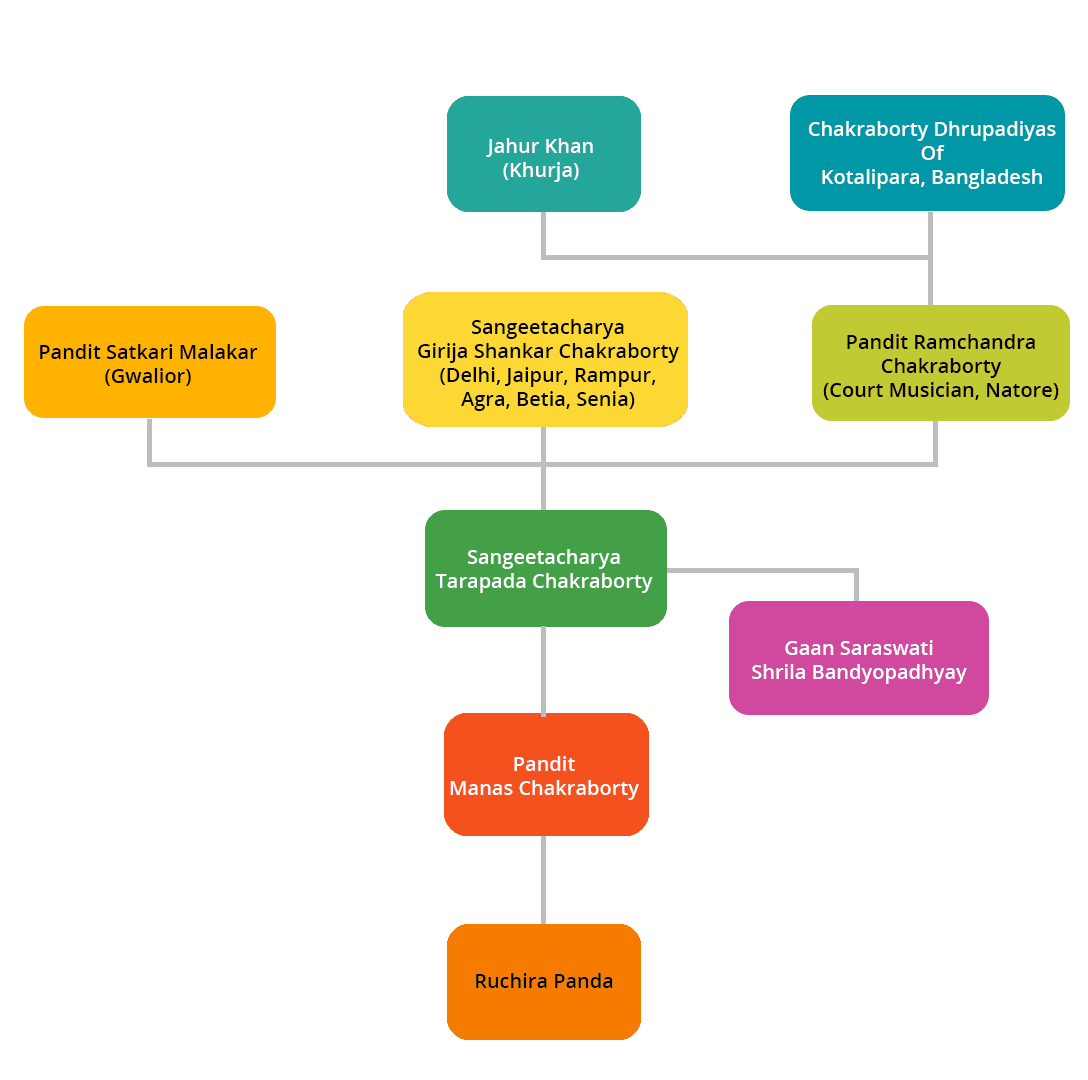Kotali Gharana

…It is interesting to note two names from Bengal that adorn the short list of Ratna (Gem) Fellows ( the highest cultural award ) of Sangeet Natak Akademi ( the apex cultural body of the Government of India ): Gopeshwar Banerjee and Tarapada Chakraborty, both the primary representatives of the two gharanas of Bengal, Bishnupur and Kotali, respectively, in their heydays.
A gharana ( style or school ) of Hindustani Classical Music, typically, is a product of geographical concentration and human migration. Various admixtures either through cultural, filial or matrimonial linkages and even political events have continuously shaped the set and characteristics of gharanas. Some have thrived across centuries due to a) strong patronage of the elites ( the Nawabs and Kings of yore or today’s Industrial-Political complex ) b) Generations of able musicians of the gharana performing across the country. c) A distinctive appeal. A lack of any of these factors in a generation typically leads to a gradual dissipation of the gharana from public memory ( case in point: there used to be quite a few gharanas in Punjab but after the partition of India in 1947 and the exodus of many Punjabi Muslim musicians to Pakistan, most have disappeared ). The technology of the Internet and the resultant easy accessibility of cross-gharana musical attributes, along with mass air transit, have also ensured a gradual amalgamation and blurring of the gharanas over the last two decades.
Many gharanas of the Indian subcontinent, have thus, without adequate force of the one or more of the three drivers listed above, either a) completely disappeared b) have been subsumed into more prominent ones c) stayed mostly local within a state or linguistic/cultural boundary – despite carrying robust, unique, universal artistic merit.
The Kotali gharana of Bengal is a prime example of this third category, having remained in the general trajectory of a minor gharana for quite a while.
After the huge pan-India footprint of Sangeetacharya Tarapada Chakraborty between the fifties and sixties of the twentieth century, his son, Pandit Manas Chakraborty, despite being the intellectual face of the gharana, stayed mostly West Bengal-bound in his four-and-a-half-decade long career. He had some personal reasons and had a well known aversion to the power-politics in classical music, which, today, has reached endemic proportions.
This got reflected in the reduction in the share of coverage of this school of music in the Indian media after 1970s. At the same time, almost all All India Radio archives of Tarapada Chakraborty were mysteriously lost. Speculations and conspiracy theories abound.
On top of that, despite the decades of prior existence, it was only in 2001 that the Kotali Gharana nomenclature was officially adopted by Pandit Manas Chakraborty, leading to some loss of mindshare.
The Kotali gharana, has been on the ascendance, though, over the last decade and a half, out of its cocoon once more, through the worldwide conference-presence of Ruchira Panda along with the gradual emergence of her students in the pro circuit. [ Excerpted ]Bengali Long-Form Raag Pradhan/ Rag Pradhan